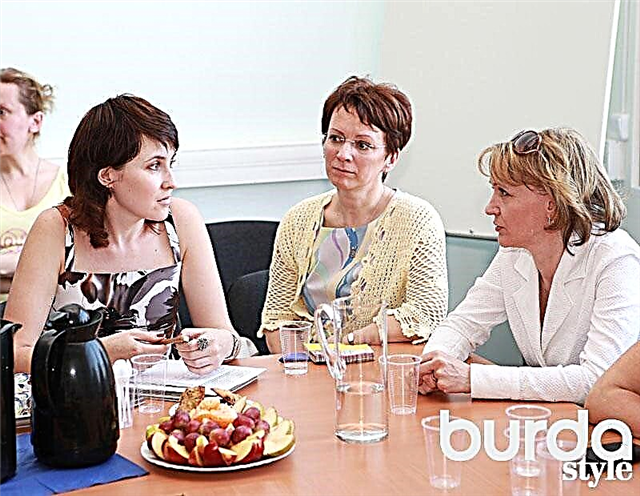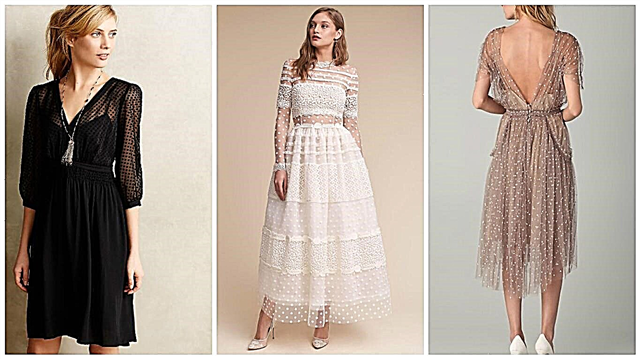Share
Pin
Tweet
Send
Share
Send
Exactly 25 years ago, the first issue of the BURDA magazine in Russian was published. Then it was a completely different country, separated for many years from the rest of the world by a dull "iron curtain".
In the mid-80s, democratic changes began in the former Soviet Union, and one of the most striking events related to perestroika was the release of the Russian version of the world-famous BURDA moden magazine, the first Western publication to appear on the territory of the USSR.It was a real breakthrough: Soviet women discovered the limitless world of fashion, got the opportunity to dress with the same taste as French women, Germans, Italians.
And the main role here, of course, was played by Enne Burda - the founder of the magazine, a successful entrepreneur who resolutely realized her dream - to make all women beautiful!
“Enne has created an atmosphere of trust between the two worlds” - this is how this event will be appreciated many years later by her son Hubert Burda, the head of Hubert Burda Media.
She managed to melt the ice in relations between people from East and West, gain the support of the “first lady” of the USSR Raisa Gorbacheva, and as a result, on March 8, 1987, the long-awaited premiere of BURDA moden in Russian took place, marked by a grandiose fashion show on the stage of the Hall of Columns.
Since then, the Russian-language edition of BURDA has become not only the largest circulation in the world - 400,000 copies per month, but also the largest.In our country, the third generation of women has grown up - devoted fans of the magazine, for whom sewing is not just a hobby, but a means of self-expression, the ability to emphasize their individuality.
Today, BURDA is published in 17 languages and distributed in 99 countries. But still, his creative center is located in the birthplace of Enne Burda - in Germany. We asked the editor-in-chief of the German publication BURDA Style about what changes are taking place in the magazine. Dagmar Bili.
- What is the difference between modern BURDA and the magazine of the 80s when it appeared in Russia?
Db: The idea of the magazine has remained the same since its foundation in 1949: to represent the current fashion for all women, regardless of shape, tastes and sewing skills. But those who used to sew by necessity can today indulge in more creativity and find their own style.
- Who is working on your team today?
Db: After the magazine moved from his native Offenburg to Munich, the editorial staff changed. Trend pages with step-by-step instructions are very important for me, where we simply and quickly transform catwalk trends into real things and thus appeal to young readers. We also work closely with the editors of our site.
It is wonderful that the archive of BURDA online patterns is constantly expanding and someday they can be accessed freely from any computer all over the world.
And although the collections are now being developed in Munich, they get a real embodiment, as before, in Offenburg, where the heart beats of our production.We work with those stylists, model girls and photographers who use our handwriting and understand our language. Fashion itself is positive, and I want to see it in the photos in the magazine. If I feel interest in a girl wearing a BURDA dress and would like to include her in the circle of my friends, this means that the process was a success.
- How do ideas for new BURDA collections appear, which models are given priority?
Db: I attend textile fairs, go to fashion shows in Paris or Milan, study fashion trends on the Internet, and look through magazines. Thanks to new media, fashion has become more global: a young girl in Moscow today learns about the latest trends as fast as her peer in New York.
Based on this, we create 600 models a year - a volume comparable to the production of a full-fledged brand of women's clothing. Our issues are very balanced: in them readers find both complex and simple patterns that are easy to sew on. We are meeting those women who have little time for needlework, but they want to look fashionable.
In addition, sewing has become popular again in recent years, and more and more newcomers are turning to BURDA magazine. They want to learn in order to go, for example, to a family holiday in a new dress and proudly say: "I sewed it myself!" And the bigger this community, the better!
Share
Pin
Tweet
Send
Share
Send



